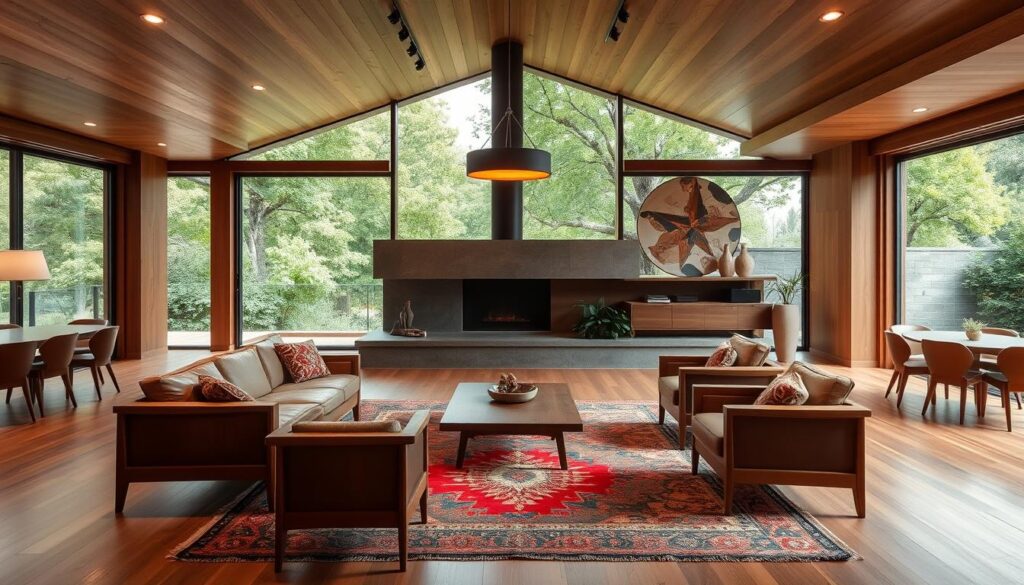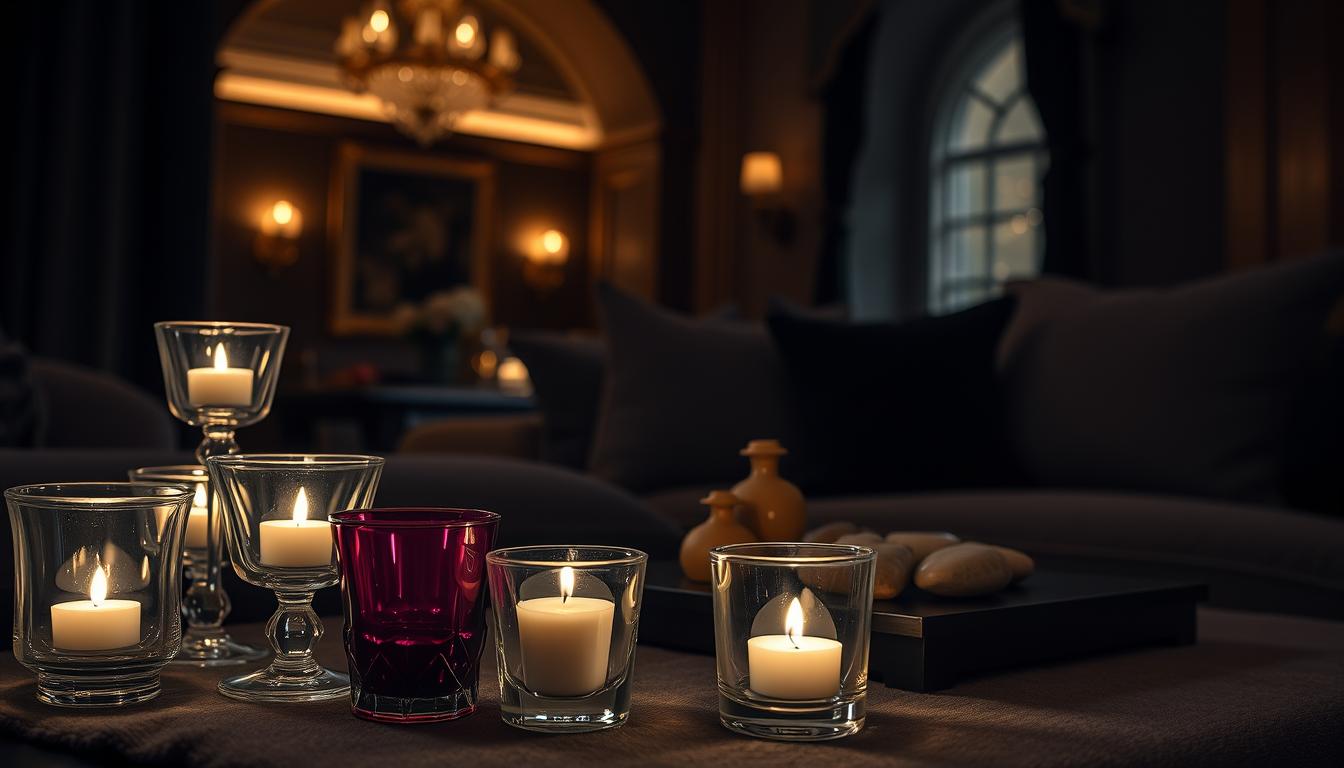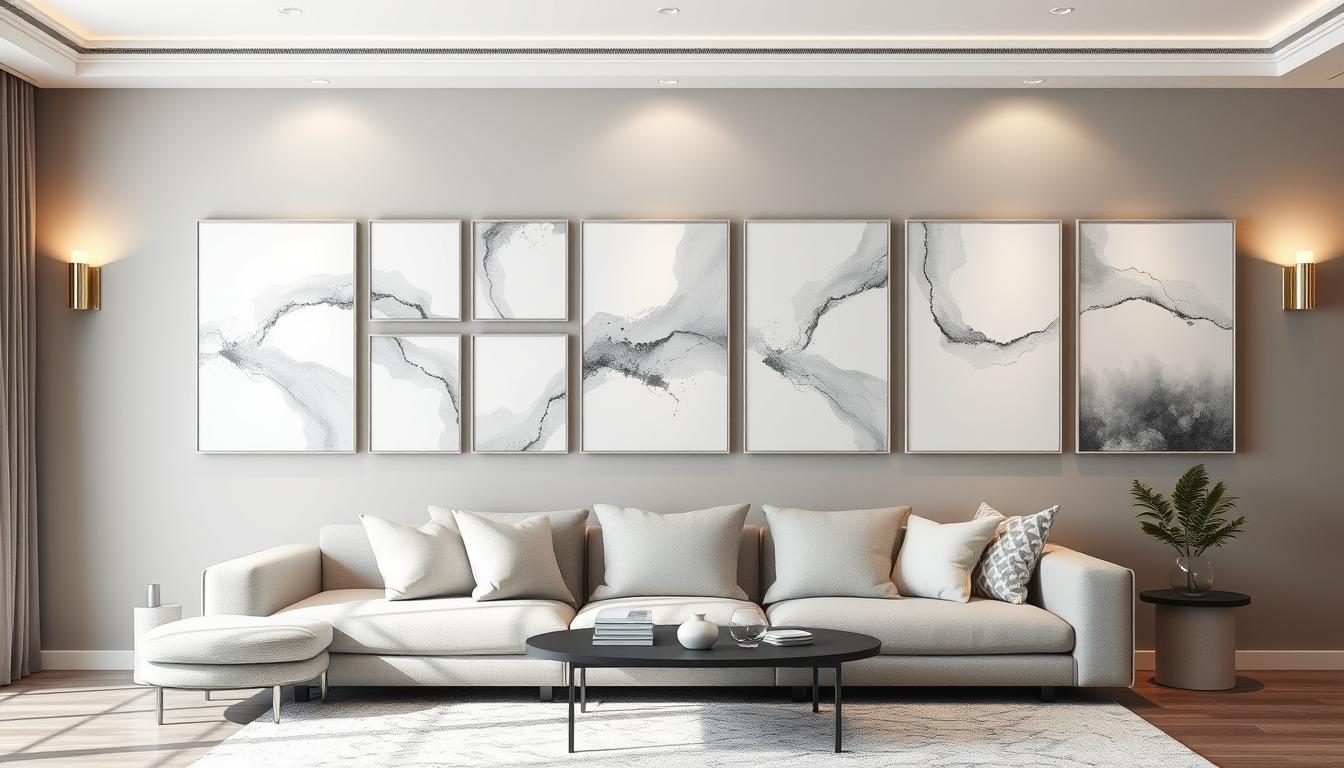The mid century modern design era, from the 1930s to the 1960s, has made a big impact on interior design trends. It’s known for clean lines, organic shapes, and focusing on function. This style still shapes today’s living spaces.
We’ll show you how to bring this classic modernist aesthetic into your home. You’ll learn about picking the right colors and choosing key furniture. Our tips will help you create a beautiful, functional space.
Key Takeaways
- Understand the core principles of mid century modern design.
- Learn how to select a fitting color palette.
- Discover iconic furniture pieces that embody the style.
- Explore ways to balance form and function.
- Find out how to incorporate natural elements.
Understanding Mid Century Modern Design Principles
To make a real mid century modern home, you need to know the design basics. This style is known for its unique elements that make a space both beautiful and useful.
Key Characteristics of the Style
Mid century modern homes have clean lines, minimal ornamentation, and focus on functionality. It’s all about simplicity and making things easy to use. Every item in the home should have a purpose.
Some key traits include:
- Simple, unadorned forms
- An emphasis on horizontal and vertical lines
- Minimal use of patterns and textures
- A focus on functionality and simplicity
The Role of Functionality
Functionality is key in mid century modern design. Furniture is made to be practical and useful. This keeps the space tidy and easy to move around.
| Design Element | Functionality | Aesthetic Contribution |
|---|---|---|
| Clean Lines | Simplifies maintenance | Creates a sense of openness |
| Minimal Ornamentation | Reduces clutter | Enhances the sense of calm |
| Organic Forms | Adds visual interest | Brings a natural feel to the space |
Emphasizing Organic Forms
Organic forms are a big part of mid century modern design. They include smooth curves and natural shapes that warm up a room. These shapes are often inspired by nature and can be seen in furniture, lighting, and decor.
By using these design principles, you can create a mid century modern home that looks great and works well. It captures the essence of retro design and 60s decor while staying simple.
Selecting the Right Color Palette
Choosing the right color palette is key to capturing the essence of mid century modern design. This style blends neutral tones with bold accents. It creates a unique and appealing look.
Popular Colors of the Era
The mid century modern era was all about bold and vibrant colors. Earthy tones like brown and beige were common. They added a natural feel to interiors. Bold colors like red and turquoise were used to add a pop of color and interest.
Creating a Balanced Look
To get a balanced look, mix neutral tones with bold accents. Start with a neutral base, like beige or white. Then, add bold colors through furniture, rugs, or decor. This way, you create a harmonious space that shows off the mid century modern style.
Using Color as a Focal Point
Color can be a focal point in your mid century modern home. Use a bold or bright color to draw attention to a room area or feature. For instance, a vibrant red sofa or a turquoise vase can be a statement piece, adding character to your space.
Choosing Iconic Furniture Pieces
The heart of Mid Century Modern design is in its iconic furniture. These pieces are both beautiful and functional. They show off the era’s love for clean lines, organic shapes, and simple designs.
Essential Furniture Items for Every Room
Designing a Mid Century Modern home means having certain furniture pieces. The Eames Lounge Chair and the Noguchi Coffee Table are key examples. They represent the style’s focus on a modernist aesthetic and minimalist style.
Adding the Egg Chair is also a good idea. It’s known for its unique shape and comfort. For more ideas, check out Decorilla’s Mid Century Modern Furniture Ideas.
The Importance of Scale and Proportion
Choosing furniture that fits well in your space is important. Too big or too small can ruin the look. Finding the right size is essential for a welcoming and stylish room.
Mixing Vintage and New Finds
Decorating a Mid Century Modern home is fun because you can mix vintage furniture with new items. This mix adds personality and uniqueness. Just make sure the overall look is what you want.
By picking the right furniture and considering scale, proportion, and mixing old and new, you can make a Mid Century Modern home that looks great and works well.
Incorporating Textures and Materials
Adding different textures and materials makes a mid century modern living space rich and inviting. This style focuses on function and organic shapes. It uses various textures and materials to add depth and interest.

Natural Materials
Wood and stone are key in mid century modern design. They add warmth and elegance. Wood is versatile for furniture, flooring, and wall paneling, tying the room together.
Balancing Hard and Soft Textures
It’s important to mix hard and soft textures in a mid century modern home. For example, a wooden coffee table and a plush area rug look great together. This mix prevents the space from feeling too harsh or too bland, making it welcoming.
Layering Textures for Depth
Layering textures adds depth to your space. Mixing wood, metal, and fabric creates a complex, engaging environment. A wooden side table, a metal lamp, and a fabric armchair form a layered look that’s truly mid century modern.
When adding textures and materials, finding a balance is key. Too many textures can clutter a space, while too few make it flat. By combining natural materials, hard and soft textures, and layers, you can create a space that’s both authentic and inviting.
Lighting That Complements the Style
Lighting is key in making a mid century modern home look great. It’s not just about turning on the lights. It’s about setting the mood that fits the style.
Iconic Lighting Fixtures
Mid century modern design loves iconic lighting. The Arco Floor Lamp and the Sputnik Chandelier are essential. They have clean lines, organic shapes, and focus on being useful, showing off the modernist look.
Natural Light vs. Artificial Light
It’s important to mix natural and artificial light. Mid century modern homes have big windows for natural light. Artificial light adds to this, making the space feel cozy and welcoming.
Creating Ambiance with Lighting
To set the mood, use dimmers, sconces, and different lighting levels. This lets you change the light to match the mood or activity. It makes your space both stylish and practical.
| Lighting Type | Purpose | Examples |
|---|---|---|
| Ambient Lighting | General illumination | Ceiling fixtures, table lamps |
| Task Lighting | Focused lighting for tasks | Desk lamps, under-cabinet lighting |
| Accent Lighting | Highlighting specific features | Spotlights, picture lights |
Choosing and layering different lights can really bring out the mid century modern vibe in your home. It makes your space both stunning and useful.
Adding Artwork and Decorative Elements
As we add artwork and decorative pieces to our mid century modern spaces, we bring the style to life. The right choices can make the retro design pop, creating a welcoming atmosphere.
Choosing Art That Reflects the Era
Mid century modern art is known for bold colors, geometric shapes, and abstract forms. It captures the innovative spirit of the 60s. Artists like Andy Warhol and Jackson Pollock are key figures of this time, inspiring our collections.
When picking art, look for pieces that match the era and your taste. This mix is key to making a space that feels both real and personal.
Incorporating Sculptural Elements
Sculptural elements, like vases or sculptures, add texture and interest to your space. They complement vintage furniture, enhancing your mid century modern home’s look.
Choose sculptural elements that match mid century modern design’s organic and geometric forms. This creates a cohesive and curated look.
The Importance of Layering Decor
Layering decor is crucial in mid century modern design. It allows you to mix textures, colors, and shapes for depth and appeal. Thoughtful layering makes your space rich and inviting.
To layer decor well, start with a key piece, like a vintage rug or a standout furniture item. Then, add decorative items like throw pillows, wall art, and sculptures. Each piece adds to the overall look.
Flooring Options That Enhance the Design
Flooring is key in mid century modern design. It sets the mood for the whole space. Choosing the right flooring is crucial to match the mid century modern style.
Popular Flooring Materials of the Mid Century
Mid century modern flooring often uses natural materials. These add warmth and texture to a room. Some top picks include:
- Hardwood: Oak, walnut, and teak are classic choices that add a timeless appeal.
- Stone: Materials like travertine and marble were used to create a sense of luxury and connection to nature.
- Cork: A sustainable and comfortable option that was popular during the mid century modern era.
These materials not only make a room look good but also feel comfortable and functional.
Area Rugs to Define Spaces
Area rugs are key in mid century modern design. They help define spaces in open floor plans and add texture and color. When picking an area rug, think about:
- Choose a rug that fits the room’s color scheme.
- Think about the material and texture to match the room’s look.
- Use the rug to create a focal point or anchor the space.
By choosing area rugs wisely, you can make your mid century modern home more functional and visually appealing.
Keeping It Authentic with Original Features
To keep a mid century modern home true to its roots, preserve or restore original flooring. This might include:
- Refinishing original hardwood floors to restore their original beauty.
- Incorporating vintage tiles or other unique flooring elements that reflect the era.
By keeping these original features, your home stays true to its mid century modern heritage.
Creating Flow Between Spaces
To truly embody the mid century modern spirit, focus on creating a smooth flow between spaces in your home. This design philosophy emphasizes a cohesive and open environment.

Open Floor Plans and Their Benefits
Open floor plans are a key feature of mid century modern design. They allow for a seamless transition between spaces. This layout makes your home feel larger and more airy.
Open floor plans also make your home more interactive and communal. They reduce the need for walls, creating a contemporary living space that feels expansive.
The benefits of open floor plans go beyond looks. They make your home more functional. For example, a kitchen that flows into a dining and living area makes meal times more social.
| Benefits | Description |
|---|---|
| Enhanced Sense of Space | Open layouts make homes feel larger and more airy. |
| Improved Interaction | Fosters a more communal living environment. |
| Better Functionality | Eases movement and interaction between areas. |
Utilizing Furniture for Separation
While open floor plans are key, sometimes separation is needed. Furniture can help with this. Pieces like console tables, room dividers, or shelving units can separate areas without blocking the flow.
A console table can act as a visual separator between a living room and a dining area. It also provides a surface for decorative items. Room dividers can separate a workspace from a living area, keeping the space open.
Transitioning Between Styles Smoothly
When different spaces have different styles, it can be hard to keep a cohesive flow. To smoothly transition between styles, use elements that tie them together. This can be through a consistent color palette, similar textures, or furniture styles.
For example, if you have a modern kitchen next to a traditional living room, use similar flooring or a unifying color scheme. This creates a sense of continuity, making the transition between spaces feel intentional and harmonious.
Indoor-Outdoor Connection
The indoor-outdoor connection is key in mid century modern architecture. It makes moving between inside and outside smooth. This design not only looks good but also works well.
Natural Light
Natural light is vital for an indoor-outdoor connection. Mid century modern homes often have big windows and sliding glass doors. These let sunlight fill the inside, linking indoors and outdoors.
Light from the sun is more than just pretty. It cuts down on the need for artificial light. It also makes us happier and more productive. By using more natural light, we make our homes more inviting and eco-friendly.
Utilizing Outdoor Spaces
Outdoor areas are a big part of mid century modern design. By adding outdoor furniture and decor that matches the inside, we make the transition smooth. We use similar materials, colors, and textures inside and out.
For example, using old furniture outside can add a cool retro vibe. Adding 60s decor, like geometric shapes and bright colors, can make the outdoor space look great.
| Design Element | Indoor Application | Outdoor Application |
|---|---|---|
| Materials | Wood, Leather | Wicker, Metal |
| Colors | Earth tones, Bold hues | Neutral tones, Earthy shades |
| Textures | Soft fabrics, Wood grain | Weather-resistant fabrics, Natural stone |
Creating Cohesive Design
To make a design that works both inside and outside, we need to think about the look we want. Using the same colors, furniture styles, and textures helps create a smooth flow. This makes our home look and feel better.
For example, if we have vintage furniture inside, we can pick similar styles for outside. This attention to detail really makes our home look great.
Personalizing Your Mid Century Modern Space
To make your mid century modern home truly yours, find a balance. Mix current design trends with your personal taste. This style is about simplicity and elegance, but it’s also a chance to add your own touches.
Balancing Trends and Personal Style
When you add new design trends to your space, think about how they fit with you. Add unique decor or family items to make it feel like home.
Making it Your Own
Use personal mementos, bold colors, or unique textures to show off your style. Whether it’s vintage furniture or modern art, making it personal is what makes a house a home.



